Today less than 10 percent of women are licensed horse trainers and having a licence in the 1960s and 1970s was even a rarer occurrence.
Back then Connemara woman Frances Loftus was one of the only women trainers in the country and she met her second husband, Prospero Colonna, a Florentine prince, while training horses in Co Wicklow. The pair married, and she became Princess Frances Colonna di Stigliano.
She had purchased Clonmannon Estate in Ashford with her first husband from the Chester Beatty estate in 1968.
The original sales catalogue from James Adam & Sons details “curious objects of art and vertu” which came with the property.



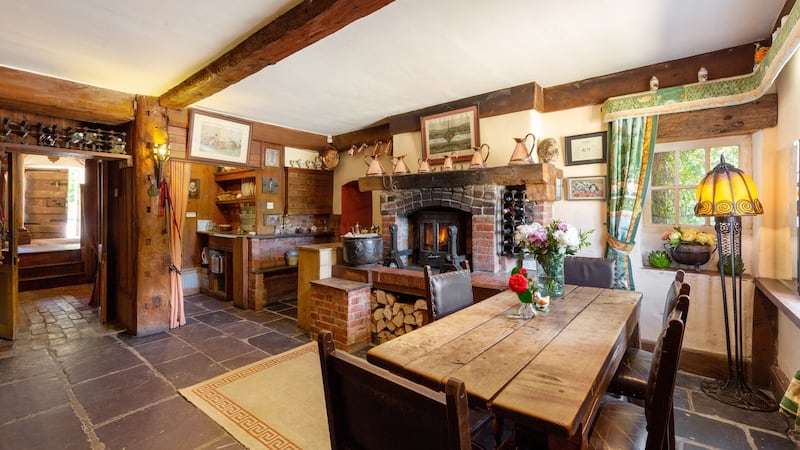
The main house, a larger younger model, and quite a bit of land was sold off in the 1980s and in 1984 herself and Prince Colonna moved to the charming Clonmannon House – an older property on the estate which was then in ruins.
Together they renovated the rambling pile using salvaged materials, some of which came from the Hibernian Hotel in Dublin. Beams used came from an old felled Lebanon Cedar from the grounds which was believed to be the largest of its kind in Europe.
The exact date of the charming redbrick pile is deemed to be somewhere between 1680 and 1700 but there is what is presumed to be a Norman keep in the dungeon, so the exact date of this most intriguing house is actually a bit of a mystery.
It is also noted on the National Inventory of Architectural Heritage, which states that “Classical style brick house is reminiscent of the work of Inigo Jones”; he was the first significant architect in England, who designed the Queen’s House in Greenwich and the Banqueting House in Whitehall. It originally had a three-bay wing on either side of the front door, but only the right side remains today.
Extending to 430sq m (4,630sq ft) the house is set over four floors and the princess still occupies the bedroom at the top which has overhead beams, a fireplace and a step-up bath.
The third floor is home to a range of opulent bedrooms, some with fabric-covered walls, as well as a nursery and a drawing room.
Downstairs the original front door opens into an impressive entrance hall with timber columns, off which lies a drawing room with an original marble fireplace. This in turn opens into a study.
There are numerous columns in the house and this is due to the fact that the Colonna surname means column in Italian, and there is much Italian influence in the design and décor itself with many aristocrats gazing out from old portraits.
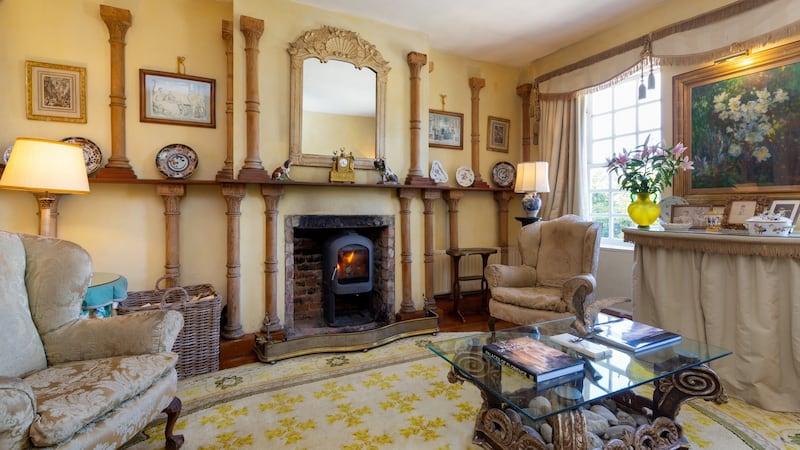

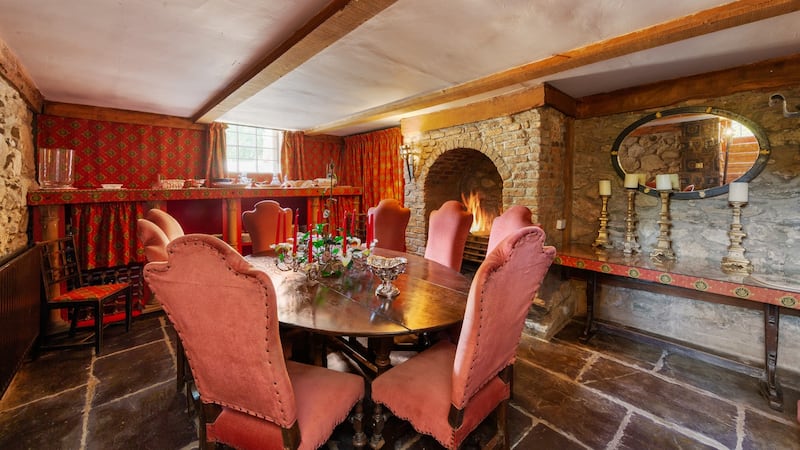
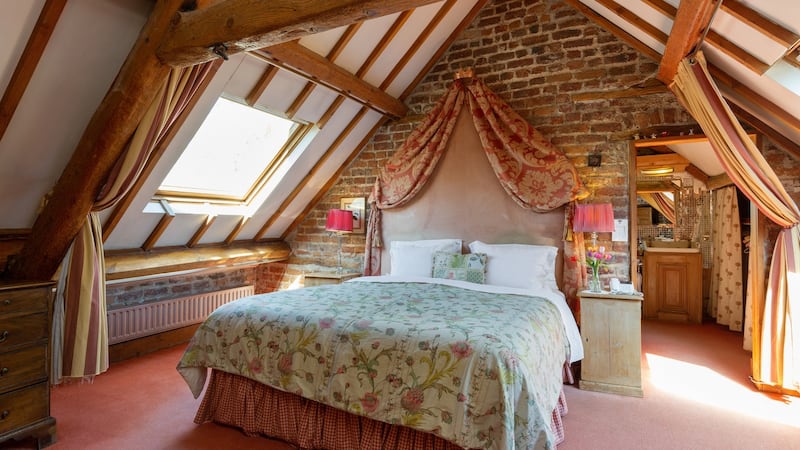
Interesting snippets from the past include a small exposed piece of wall in one of the upstairs bathrooms. Dating from 1894 (almost two centuries after the house was constructed) it has writing that details the numbers of traps (for otter and rabbits) that were set on April 24th that year.
To the left of the entrance hall is a full-depth banqueting hall with a large open hearth and an ideal spot for entertaining, where the family held many lunches over the years. A flight of steps leads to the kitchen which has low-slung exposed beamed ceilings and a raised fireplace with solid-fuel burner.
Outbuildings are as interesting as the house itself, which the late Knight of Glin described as “having a touch of doll’s house Palladian”. Part of the old stables are what Frances calls “Cromwell’s loo”, as his army would have dried their clothes in the basement of the main house and used the stables as a latrine.
Another part of the old stables, which offer more accommodation, is called the “art gallery” as when children, the two daughters drew on the walls instead of tending to their homework.
But it will be the gardens that will really make new owners swoon as they have a right of way and direct access to the local beach. Designed by Frances herself, and in which she was heavily involved in every aspect of work, they now have ornamental lakes, lawns and mature planting.
A particularly attractive feature is the Japanese-style wooden bridge in likeness to that of Monet’s at Giverny. For her 70th birthday Frances hosted a party in the garden where all guests dressed up as Impressionist painters.
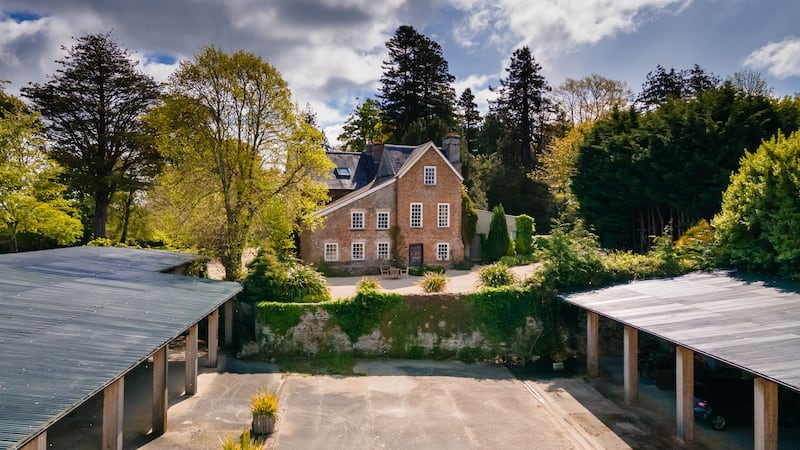
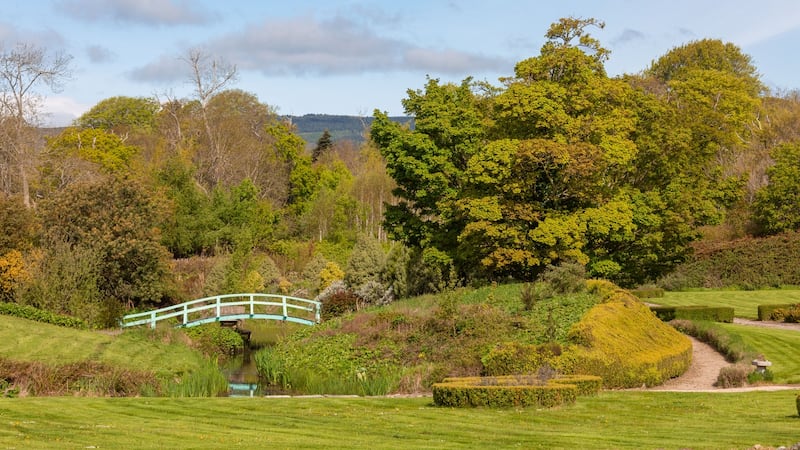
Although the house appeared on the market in 2006 when it was seeking €5.6m, it then had 185 acres.
It has now been launched on the market though Knight Frank seeking €1.5m, and with 10 acres, as one of the oldest inhabited houses in the country, its charm and character are endless.










